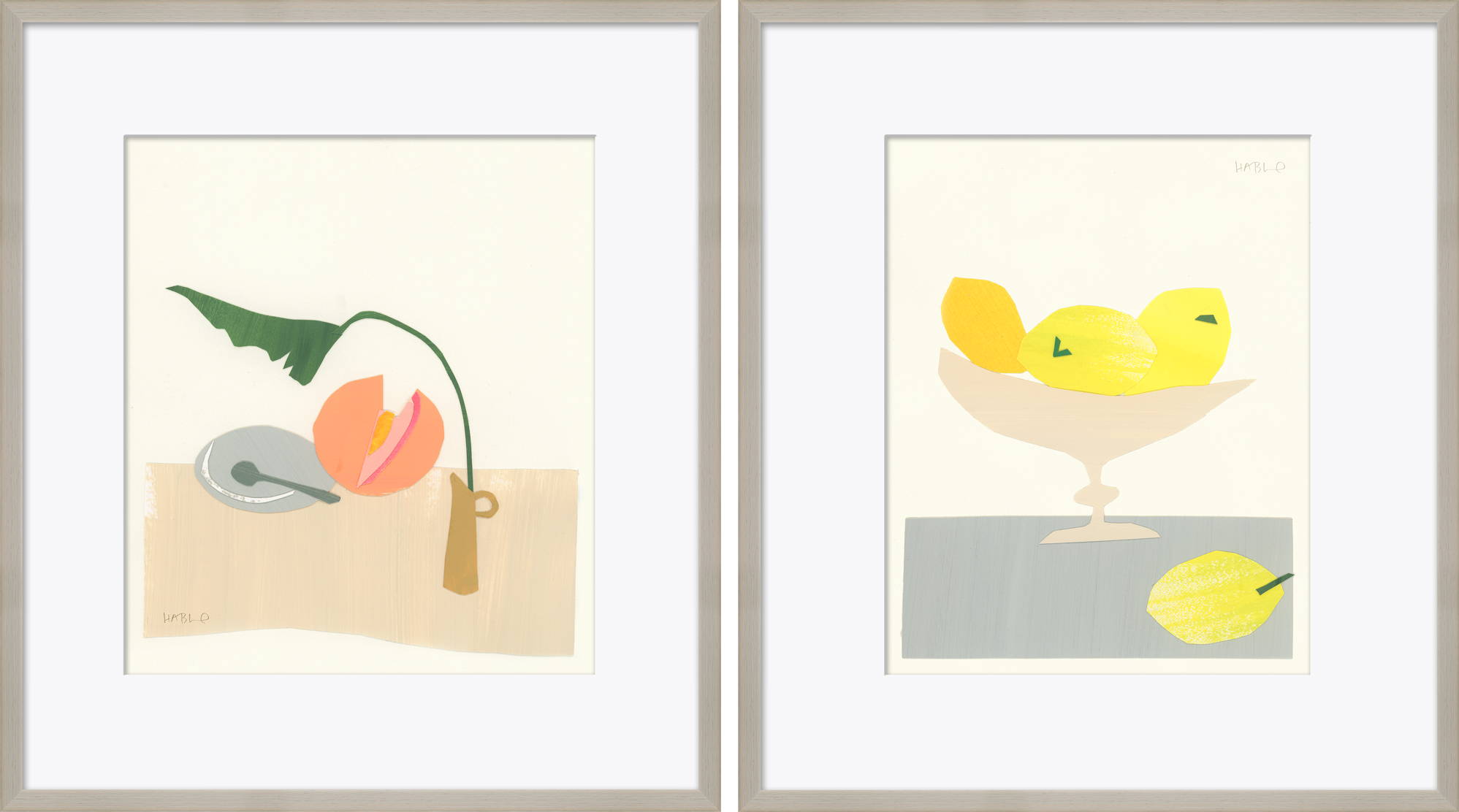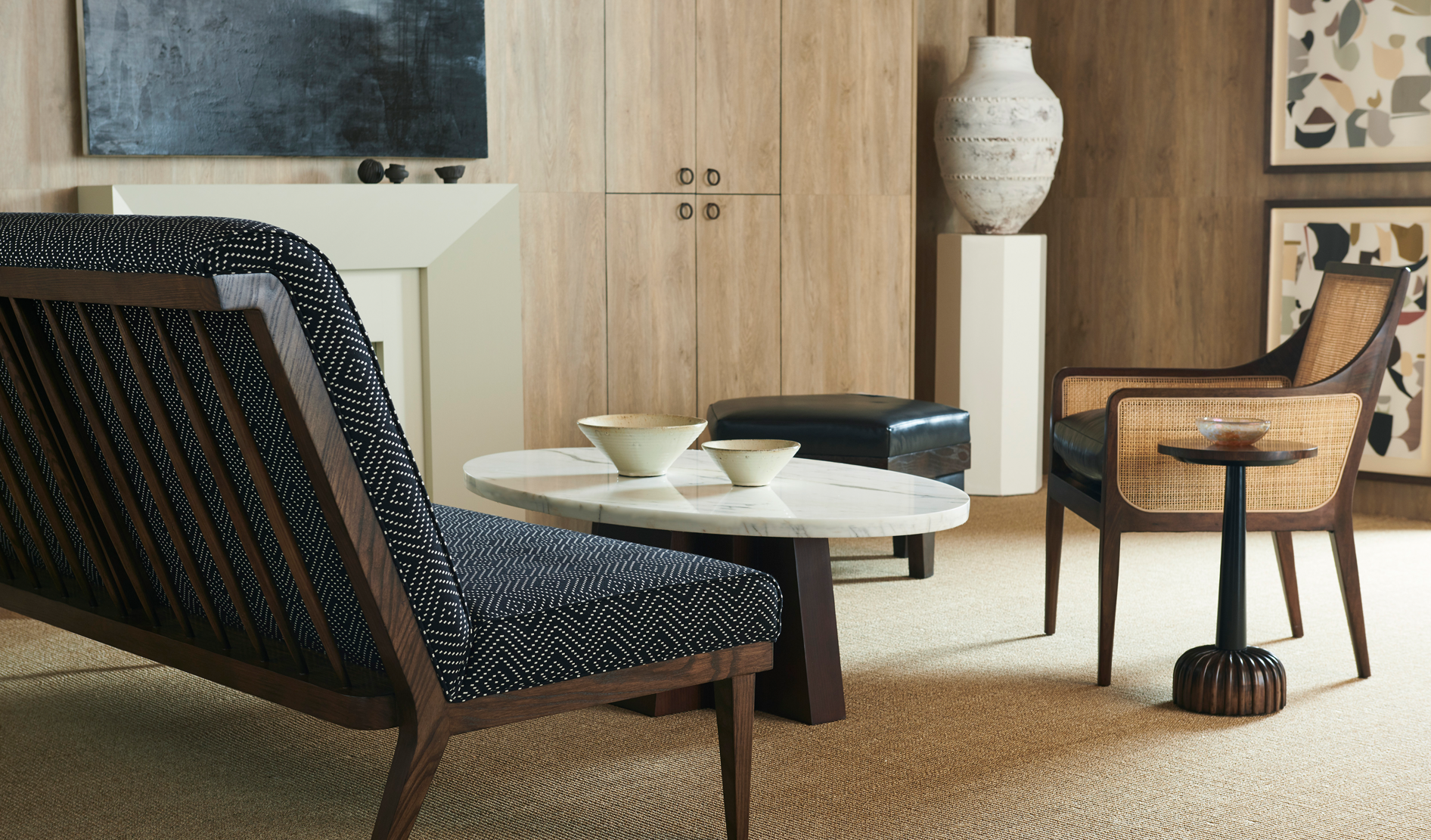The truth is, Susan’s brain is always running at warp speed, whether she’s in her backyard studio in Athens, Ga.—actually rebuilt out of two old mill houses that had been slated for demolition—or on her travels to Mexico or this year (fingers crossed) a cruise down the Nile River in Egypt.

She and her business partner, older sister Katherine, grew up in the small town of Corsicana, Tex., and from an early age, Susan was the creative one in the family. “I’ve always drawn,” she says, “and I have memories of my art projects from my childhood,” including drawings her grandfather would mark up with grades like A++++. Hable’s mother, who was creative herself, fostered her daughter’s artistic talents, even encouraging the 10-year-old Susan to spend time at the studios of two top-notch local women artists, a watercolorist and an oil painter. “I’d work in their studios, where they’d have classes, and they’d give me lessons,” Susan recalls. “It was great, because I just got to be around art.”
But she never knew if her own art could turn into a business until 1990, when she and Katharine founded the textiles company Hable Construction (named after their great-grandfather’s former road construction business) in New York City. “Katharine is a natural saleswoman, and I’m artistic. We really believed in each other. We started off just making things— scarves, aprons, hand-silk-screen printing things.” Soon realizing that their heart was more in the fabric itself, the two began designing textiles, many of them bold, graphic patterns hand-drawn by Susan. Today, the company uses traditional screen-printing techniques to make its textiles in a New England factory that also creates fabrics for such venerable houses as Schumacher and Brunschwig & Fils.
The two sisters “fuel each other,” says Susan, who describes Katharine as “high energy and sunshine.” Clearly that runs in the family. “We work so well together because we had to figure out how to do so, and our relationship has gotten even better over the years that we’ve run this company.”

Over its two decades, Hable has branched out from textiles into an array of other creative projects, including fine art, floor coverings, bedding, lines for Garnet Hill and Maitland Smith, a design book (A Colorful Home: Create Lively Palettes for Every Room) and even a children’s book. “We learned along the way,” Susan says. “We don’t claim to be geniuses, but we’re savvy and we’re resourceful. We’re very hardworking and we have a lot of self-will.”
But at the core of their enterprise is Susan’s vision and visuals. “Art has driven all the outlets—every product, every textile, comes back to my artwork,” says Susan. “I’ve always been creative, but to have a commercial business based on my art has been incredible. I’ve had the opportunity to make things I never thought I would.”
That includes the children’s book, which—as with much that Susan does—came about somewhat serendipitously. “It didn’t start off as a children’s book,” she says. “I was just making art, as I always do, and ended up making this whole series of gouache collages. I’d done the art, but I had nowhere for it to go. Then I got a call from a new Charleston publisher, Lil Bit Lit, about maybe doing a book, and I realized that the collage art was perfect for a book that has no words but is all about shapes.”

In the last five years, Hable’s work has also included the striking midcentury-meets-Scandinavian designs that Susan creates for the Hable for Hickory Chair furniture line of bedroom, dining room, and living room pieces.
The folks at Hoff Miller, who carry the furniture line as well as Susan’s fabric and artwork, are super fans. “The furniture forms are very organic, and the fabrics she selects really highlight the designs of the pieces,” says Hoff Miller’s Caitlin Mancini. “The collection is so diverse that you could put a whole house together with it and it wouldn’t look matchy-matchy.” Adds Leanna Boers, owner of Hoff Miller: “It’s almost like antique modernist furniture. Many of the pieces could fit into a very traditional or a very contemporary setting.”
For Susan Hable, the furniture designs are as personal as her fabrics and her artwork. “It’s my hand that’s in each pattern, and it’s like my signature,” Hable says. “My hand creates certain shapes, after which I pass them along to somebody else who puts them into the computer and we manipulate them even further, and then we sent them off to be woven or printed.

Hable’s partnership with Hickory Chair came about ten years ago—and, as far as Susan is concerned, it’s a marriage made in heaven. “The people at Hickory Chair are so supportive,” she says. “They love what we bring to them. A lot of their customers are still buying traditional things, but they also have many young customers who want furniture that’s a little more contemporary. We definitely speak to that.”

Though Susan says she listens to who the Hickory Chair customer is, she is equally influenced by what she herself loves—“things that I would have in my own home. That might sound too personal, but if Katharine or I wouldn’t own something myself, I would never create it. I may not be so young, but I feel very young, and our pieces are more contemporary and graphic.”
Both Hable sisters now live in Athens, an “incubator for creativity” that is an easy three-and-a-half-hour drive from the Hickory Chair factory in Hickory, N.C. That proximity allows Susan to be hands-on with the furniture. “When I’m designing a furniture collection, I can go and sit and feel things,” she says. “There are so many little details that can make a piece good or not. And the skilled craftspeople in the Hickory Chair factory will not let something leave the floor without it sitting right. They’ll ask, ‘Do you feel anything in your shoulder blades? How about your lower back? Where are your feet landing when you sit down? This is their business. But it’s a team environment. I can tell if a piece of wood is too chunky, if something’s sitting too high, or if an edge isn’t right. It’s like architecture.”